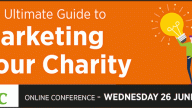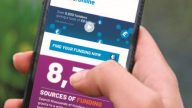Using LinkedIn to grow your fundraising
Want to use LinkedIn for fundraising? Here are some top tips from Michelle Benson, Fundraising Consultant.
Fundraisers, you are at your most productive when you are:
- Engaging prospective donors
- Honing your case of support
- Securing new donors
- Stewarding existing relationships
But as many fundraising teams are already woefully under-resourced, finding time to prioritise the above while meeting the internal demands of your charity is a challenge. And yet all charities expect their fundraisers to grow income year on year.
This is where using tools like LinkedIn strategically – can help you:
- Identify, reach and engage prospective donors (so you can take them offline to an ask)
- Hone your case of support (to help increase your conversion rates)
- Steward your current donors (to increase retention)
But more importantly, if you use the platform as a relationship tool and NOT a free spamming platform, it can help you achieve the above without having to add more staff to your team.
In the past, you may have found yourself chasing leads one by one, trying to convince your trustees to open up their address books or having to host drinks receptions or events – just so that you could get in front of prospects to start a conversation.
To increase this activity, you needed to increase your staff.
LinkedIn allows you to connect with multiple individuals at once without having to go through other people or try to get people to come to an event so you can speak to them. This is how one member of staff can reach the numbers it would traditionally take at least three or four to. The platform has already gathered the people you wish to meet in one place and has organised it so you can engage in conversations with them without any barriers. The algorithm also acts as a full time prospector on your behalf.
The offline world is designed to keep you out – but the online world is designed to connect you in very large numbers. So, you can initiate conversations with prospective funders as a welcome guest and NOT an unwanted pest (unless you choose to spam people via direct messages).
It starts with your personal profile
Make sure your profile is up to date and showcases what your charity has to offer. Then start to invite funders to connect.
Be generous with your likes and comments. But do make your comments meaningful, it is better to leave fewer good comments than lots of meaningless ones.
Once you start to connect and comment, the algorithm will bring you more of the same (so it is prospecting for you).
The key is to turn up and engage regularly. The more you are seen, the more people can approach you.
If you treat LinkedIn like a free advertising channel to constantly showcase your charity – do not expect engagement. LinkedIn sells adverts it does not distribute them for free, and people do not go onto LinkedIn to read ads. So, don’t sound like an ad for your charity.
Try to make your content engaging
The more people you can start a conversation with (in the news feed), the more people will direct message you asking to continue the conversation offline.
LinkedIn is a great tool to help steward your current donors too. Rather than think of it as all or nothing, consider LinkedIn as an extra string to your bow. Mix LinkedIn conversations with all the other ways you keep in touch with your donors offline. So, you can increase your touch points to deepen your relationships.
The big difference is when you steward your donors outside of LinkedIn no one can see you. On LinkedIn other people can read the conversations you have with your current donors. So, your stewardship doubles up as social proof to a cold audience (because cold prospects can see you already work in successful partnerships with funders similar to them).
Using LinkedIn strategically can really turbocharge your fundraising endeavours because it gives you access to large networks of funders that would be impossible to reach offline.
If you and your team spend 20 to 30 minutes each day on LinkedIn, connecting, liking and commenting, you can then come off the platform and get on with your day job. Virtual you IS still on the platform networking while real you is at work, meaning there are now two you’s – but one salary.
That is how you really leverage the platform and your own time.
If you’d like to know more about Michelle’s fundraising work, take a look at her website here.



